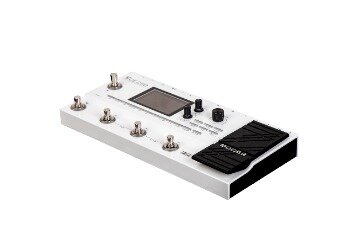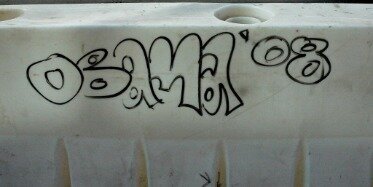Contents:


Average cost is the total cost divided by the total number of units produced. When average cost increases, marginal cost is greater than average cost. When average cost decreases, marginal cost is less than average cost.
For example, if you need to move into a larger facility to produce additional goods, you would factor that expense in. Marginal cost is the cost to produce one additional unit of production. It is an important concept in cost accounting as marginal cost helps determine the most efficient level of production for a manufacturing process. It is calculated by determining what expenses are incurred if only one additional unit is manufactured. Marginal cost is an important factor in economic theory because a company that is looking to maximize its profits will produce up to the point where marginal cost equals marginal revenue .
Nana Grants receives $93,000 from Community Foundation for … – PR Web
Nana Grants receives $93,000 from Community Foundation for ….
Posted: Sun, 26 Mar 2023 07:00:00 GMT [source]
Fixed costs remain constant over a relevant range of total production, but increase in steps as additional investments are required to produce more products or services. Variable costs change directly in relation to the volume of production or activity. The terms marginal cost and variable cost are not interchangeable. Marginal costs are the increase or decrease in total costs resulting from one extra unit of production, and they can include both fixed and variable costs.
Marginal analysis is an examination of the additional benefits of an activity when compared with the additional costs of that activity. Companies use marginal analysis as to help them maximize their potential profits. Marginal cost is also beneficial in helping a company take on additional or custom orders.
The marginal cost formula can be used in financial modeling to optimize the generation ofcash flow. As we can see, fixed costs increase because new equipment is needed to expand production. Variable costs also increase as more staff and raw materials are needed. At the same time, the number of goods produced and sold increases by 25,000. The marginal cost of these is therefore calculated by dividing the additional cost ($20,000) by the increase in quantity , to reach a cost of $0.80 per unit.
What is Marginal Cost
Therefore, the average cost for the production of 5000 chocolate bars is $4. An example would be a production factory that has a lot of space capacity and becomes more efficient as more volume is produced. In addition, the business is able to negotiate lower material costs with suppliers at higher volumes, which makes variable costs lower over time. Begin by entering the starting number of units produced and the total cost, then enter the future number of units produced and their total cost.
Learn financial statement modeling, DCF, M&A, LBO, Comps and Excel shortcuts. But eventually, the curve reverses trajectory and climbs upwards due to the law of diminishing marginal returns. Harkat Tahar is a professional academic researcher with more than 6 years experience. He holds a bachelor and masters degree in business administration from Al Akhawayn University and has experience in teaching various courses that includes managerial finance and research methods. INVESTMENT BANKING RESOURCESLearn the foundation of Investment banking, financial modeling, valuations and more.

He then has a number of variable costs such as staff, utility bills, and raw materials. You perform a marginal cost calculation by dividing the change in total cost by the change in quantity. Marginal costs typically decrease as companies benefit from economies of scale—the cost advantages experienced by a business when it increases its output level. For example, a company might reduce the price per unit by buying supplies in bulk or negotiating with suppliers for volume discounts.
The Importance of Marginal Cost
For lower levels of output, the spreading effect dominates the diminishing returns effect, and for higher levels of output, the contrary holds. At low levels of output, small increases in output cause large changes in average fixed cost. This effect is called the spreading effect since the fixed cost is spread over the produced quantity. Given a certain amount of fixed cost, the average fixed cost decreases as the output increases.
This is because fixed costs usually remain consistent as production increases. However, there comes a point in the production process where a new fixed cost is needed in order to expand further. In turn, this has an impact on the final marginal cost and decision to expand. He has a number of fixed costs such as rent and the cost of purchasing machinery, tills, and other equipment.
It doesn’t matter if one monitor is made or 100, the cost of the facility and equipment will remain fixed. There’s a mathematical formula that expresses the change in the total cost of a good or product that comes from one additional unit of that product. Knowing this formula is essential in learning how to calculate marginal cost. It is called the marginal cost equation or marginal cost formula.
The AVC is used to decide when to shut down production in the short run. For example, a firm can continue its production if the price exceeds AVC and covers some fixed costs. Conversely, a firm would shut down its production in the short run if the price is less than AVC.
If the hat factory was unable to handle any more units of production on the current machinery, the cost of adding an additional machine would need to be included in marginal cost. The 1,500th unit would require purchasing an additional $500 machine. In this case, the cost of the new machine would need to be considered in the marginal cost of production calculation as well. Marginal cost is calculated as the total expenses required to manufacture one additional good. Therefore, it can be measured by changes to what expenses are incurred for any given additional unit. A company can maximize its profits by producing to where marginal cost equals marginal revenue .
Everything You Need To Master Financial Modeling
First, calculate the average variable cost for each output level. Also, determine the output level where the average cost is the minimum. The marginal cost formula tells you how much it costs to make one additional unit of your product.
- But eventually, the curve reverses trajectory and climbs upwards due to the law of diminishing marginal returns.
- These new measures analyze costs on a per-unit basis and are reflected in the curves shown in Figure 7.4.
- The distance of the beginning point of the SRTC above the origin represents the fixed cost – the vertical distance between the curves.
- As a manufacturing process becomes more efficient or economies of scale are recognized, the marginal cost often declines over time.
Barbara is currently a financial writer working with successful B2B businesses, including SaaS companies. She is a former CFO for fast-growing tech companies and has Deloitte audit experience. Barbara has an MBA degree from The University of Texas and an active CPA license. When she’s not writing, Barbara likes to research public companies and play social games including Texas hold ‘em poker, bridge, and Mah Jongg. For example, a cereal maker in the food industry may shrink its box size or number of ounces to save costs and keep current product pricing. Get instant access to video lessons taught by experienced investment bankers.
Components of the Average Cost Equation
Using this information, a company can decide whether it is worth investing in additional capital assets. Fixed costs are constant regardless of production levels, so higher production leads to a lower fixed cost per unit as the total is allocated over more units. The marginal cost intersects with the average total cost and the average variable cost at their lowest point. The fixed costs in this case are costs that do not change based on quantity while the variable costs can change based on quantity and other factors. In economics, the profit metric equals revenues subtracted by costs. Therefore, a company’s profits are maximized at the point at which its marginal costs are equivalent to its marginal revenues, i.e. the marginal profit is zero.
Union Will Help American Airlines Track Down And Fire Flight … – View from the Wing
Union Will Help American Airlines Track Down And Fire Flight ….
Posted: Thu, 20 Apr 2023 15:58:42 GMT [source]
To llc accounting the changes in quantity, the number of goods made in the first production run is deducted from the volume of output made in the following production run. Financial ModelingFinancial modeling refers to the use of excel-based models to reflect a company’s projected financial performance. Manufacturing Overhead FormulaManufacturing Overhead, also known as Factory Overhead, refers to all the indirect factory-related costs incurred in the product manufacturing process. This might be in order to get rid of stock that is going out of date, or, to attract customers to purchase cheap goods. Whilst in the store, the idea is that they would also purchase other products that offer the firm a profit. John Monroe owns a privately owned business called Monroes Motorbikes.
Alternatively, an individual may be a smoker or alcoholic and impose costs on others. In these cases, production or consumption of the good in question may differ from the optimum level. AP automation software will streamline workflow, help your company take early payment discounts, and reduce fraud risk and duplicate payment errors when making global payments. This significantly increases efficiency, cuts costs, reduces the need for hiring, and speeds up the accounting monthly close so you can focus on strategic finance. Marginal costs provide insights into the optimal production output and pricing, i.e. the point where economies of scale are achieved.
What Is Marginal Cost? Definition and Calculation Guide
For purposes of comparing how average total cost can change based on production, let’s set output at 4,000 in July and 6,000 in August. When economists, production managers, or others refer to average total cost, they are referring to the per unit cost that includes all fixed costs and all variable costs. Knowing average total cost is critical in making pricing decisions, as any price below average total cost will result in a financial loss. In the case of fixed costs, these are only calculated in marginal cost if these are required to expand production.
- For example, a cereal maker in the food industry may shrink its box size or number of ounces to save costs and keep current product pricing.
- It is the change in total cost for an incremental change in production.
- Average Cost equals the per-unit cost of production which is calculated by dividing the total cost by the total output.
- Break even point analysis provides a clear picture of when the company covers its variable and fixed costs through revenue generation.
To work out the change to your quantities, you’ll need to deduct the number of goods from your first production run from the number of goods from the second, expanded production run. On the other hand, oligopolies are markets with the same product but with very few sellers. Oligopolies do not use marginal cost to price goods, instead of using something like the Nash equilibrium to find the right price level. This article describes how to calculate and apply marginal costs to improve your decision-making process.
Decisions taken based on marginal costs
When the marginal social cost of production is less than that of the private cost function, there is a positive externality of production. Production of public goods is a textbook example of production that creates positive externalities. An example of such a public good, which creates a divergence in social and private costs, is the production of education.
Any price below the average total cost will lead the company or business organization to incur losses. Average variable cost represents the cost per unit of variable inputs used to produce goods or services. In contrast, marginal cost represents the cost of producing one additional output unit.

It is the marginal private cost that is used by business decision makers in their profit maximization behavior. It incorporates all negative and positive externalities, of both production and consumption. Examples include a social cost from air pollution affecting third parties and a social benefit from flu shots protecting others from infection. The long run is defined as the length of time in which no input is fixed. Everything, including building size and machinery, can be chosen optimally for the quantity of output that is desired.
As we learn, the average fixed costs decrease as the total quantity increase. In economics, the marginal cost is the change in total production cost that comes from making or producing one additional unit. To calculate marginal cost, divide the change in production costs by the change in quantity. The purpose of analyzing marginal cost is to determine at what point an organization can achieve economies of scale to optimize production and overall operations. If the marginal cost of producing one additional unit is lower than the per-unit price, the producer has the potential to gain a profit.